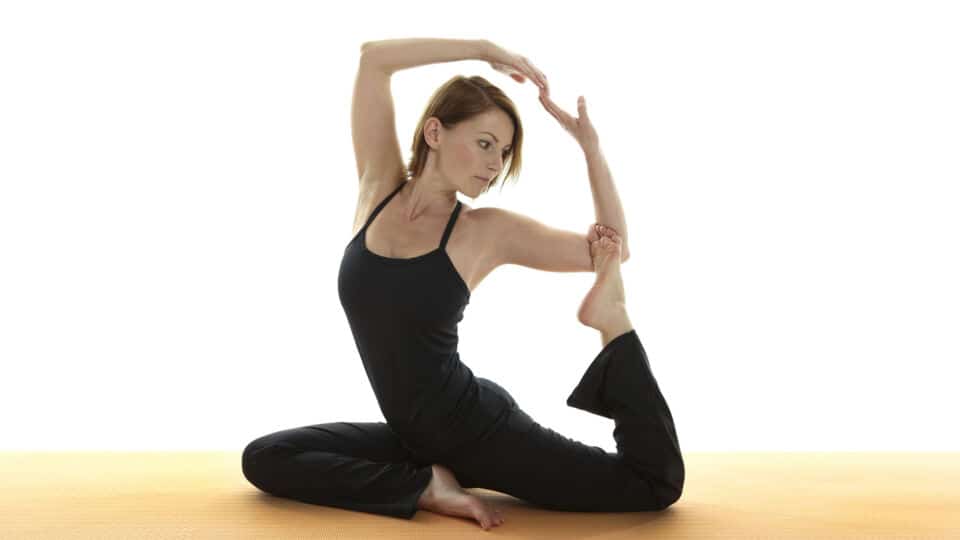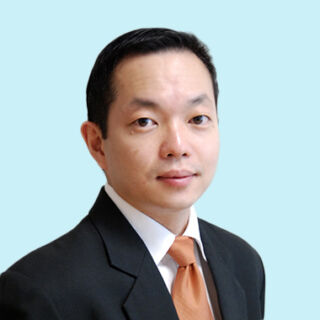Shoulder and Knee Injuries – Casing the Joint

Sports are becoming increasing popular with Singaporeans in recent years. The proportion of people getting sports injuries are also increasing as weekend warriors and over enthusiastic athletes embark on them with poor training practices, improper gear or equipment and lack of conditioning. Some of the more serious injuries occur around the knee and shoulder joints.
How do knee injuries occur?
Many popular sports like soccer, basketball and running, places tremendous stress and require a lot of coordination from the knee. The knee is one of the most common joint injury presented to an orthopaedic surgeon.
Some common knee sports injuries include patellofemoral pain syndrome, anterior cruciate ligament (ACL) tears and menisci tears.
The patellofemoral joint takes five to seven times the body weight of a person when he jumps and lands on his knee, or run up a flight of stairs. With the average knee bending over one million times a year, the patellofemoral joint can often be injured as a result of an overuse syndrome.
This can be accentuated if there is valgus malalignment in the knee, leading to mal-tracking of the patella. These result to pressure being concentrated on the lateral facet of the patella and subsequently, chondral injuries.
The ACL’s main role is to limit the forward movement (anterior translation) of the tibia on the femur and also to provide rotational stability in the knee. The ACL is often torn from non-contact twisting injuries sustained when the knee get twisted as the foot is planted on the ground. e.g. jumping for a header, landing after a dunk in basketball or a spike in volleyball. It can also occur during a run when one lands on an uneven surface and sustain a twisting injury in the knee.
The menisci can also be damaged either alone or together with an ACL injury. The mechanism of injury is somewhat similar to that of the ACL.
Symptoms of Knee Injuries
What are the symptoms of Patellofemoral Pain Syndrome?
With patellofemoral pain syndrome, the patient usually present with anterior knee pain. The pain is not disabling but it is an annoyance, affecting certain activities which require bending of the knee.
The patient typically complains of pain when climbing stairs or getting up from prolonged sitting posture. They also complain of discomfort in the knee during squatting.
It is different from meniscus pathology where they experience pain throughout the motion of squatting; in meniscus tear, patients feel pain at terminal squatting. They will often feel discomfort in their knee after prolonged sitting like during a movie or car ride and will need to straighten their knee to ease the “pain”.
What are the symptoms of an Anterior Cruciate Ligament Tear?
Patients with ligament injury often feel a sensation of “pop” at the point of injury. Very often there will be immediate swelling in the knee and difficulty walking for up to two weeks due to the pain and swelling.
In chronic cases, the patient usually feels a sense of the knee ‘giving way’. After an acute episode, a lot of patients with ACL tear usually feel no pain. But many do complain of this sense of “giving way” that either prohibits them to go back to their usually activities or may result in episodic swelling in the knee resulting in lost times at work or sports. They often have problem pivoting on their affected leg and will have problem jumping and landing on the affected leg.
What are the symptoms of a Meniscus Tear?
In meniscus tear, the problem may result in locking of the knee. The knee may feel stuck in certain positions and only unlock itself in others. There is often pain in menisci injury especially in certain positions, depending on which part of the meniscus is torn.
Less severe tears may not present locking. The patient may have terminal pain when squatting or climbing stairs. Sometimes the only sign may be joint line tenderness in a young patient who had a recent twisting injury.
What can be done to treat knee injuries?
RICE therapy is recommended for any acute joint injury. Rest the knee by reducing the amount of weight bearing and if needed, use a pair of crutches to decrease the stress on the knee. Ice the knee for 20 mins every two hours for two days. This will help to control the pain and inflammation. Compression can be achieved with a tubigrip or bandage. Usually the compression is maintained for one week. Elevate the knee above the hip to promote passive drainage of the leg.
Patellofemoral pain syndrome can often be treated with vastus medialis oblique muscle strengthening, quadriceps re-training or selective tapping of the knee. However if the patient has a mal-alignment knee then he should be advised to cut down on running and jumping activities. When the pain eventually disappears, the patient should try to moderate the exercise and increase the intensity at a gradual pace.
Peripheral and stable menisci tears may sometimes heal on their own. Unstable tears or tears further away from the capsule has poorer potential to heal and may need arthroscopic repair (Fig 1) or partial menisectomy. Complete anterior cruciate ligaments tear on the other hand will not heal. Very often, if the patient wishes to remain active in sports then an anterior cruciate ligament reconstruction is often needed (Fig 2).
Shoulder Injuries
How do shoulder injuries occur?
The shoulder joint is the most mobile joint in the body and this mobility comes with a cost: it is the most frequently dislocated joint in the body.
The cause of dislocation is often a result of the position of the arm and the severity of the force. Often the patient’s arm is in a “ball throwing” position (arm adducted and externally rotated) when the dislocation occurs. Some individuals may have ligamentous laxity, which make them more prone to getting dislocations.
Rotator cuff tendinitis is another common problem in overhead athletes. Sports like baseball, softball, badminton, swimming, tennis, basketball, volleyball, rock climbing and weight lifting can result in rotator cuff tendinitis.
This often occurs because of inadequate stretching prior to the game, repetitive actions or over extension of the shoulder during the game. Patients with a hook acromion (Type III acromion, Fig 3) or os acromionale are more likely to get this problem.
Patients above 40 years old start getting non-compliance coraco-acromial ligaments and sometimes this ligament can calcify, forming a bone spur (Fig 4). This can also lead to external impingement syndrome.
Repeated tendinitis can in turn lead to attrition tear in the rotator cuff.
What are the symptoms of Shoulder Injuries?
Rotator Cuff Tendinitis
Shoulder pain may occur when a patient is hitting a long drive in golf, leaping for a ball, returning a drop shot or reaching backwards without turning the trunk. But most times, the event maybe so minor that the patient may have forgotten about it. Pain usually develop gradually and may happen two to three days after the initial injury.
The patient may experience problems taking off his T-shirt, reaching one’s back or combing one’s hair. The patient may not be able to perform his work because of an inability to reach above his head. There may be pain lying on his affected side.
Instability
In between dislocations, there may not be pain but this does not mean all is well. Very often during the first dislocation, the ligament and labrum may be torn. This leads to a “loose shoulder” which may allow future dislocations. Frequent dislocations can lead to fracture, cartilage damage and arthritis.
Some individuals may not suffer from Frank dislocations; instead they feel they cannot throw as far or swim as hard due to a catch or pain every time their arm is in the “ball-throwing” position. This may be due to subluxation in the shoulder joint.
What can be done to treat shoulder injuries?
As in the knee, RICE therapy can first be instituted. For rotator cuff tendinitis, often a course of NSAIDs would help to check the inflammation. However, if the pain persists for more than six weeks, then a cortisone injection to the subacromial can be given.
The strength of the rotator cuff muscle should be checked after the injection. If the pain has been eliminated and there is still weakness, then one should suspect a tear. An MRI is the preferred imaging to confirm the tear as it allows one to assess atrophy and the amount of retraction of the muscle so as to prognosticate the injury.
An arthroscopic rotator cuff repair is recommended if there is a tear (Fig 5). This can often be achieved through three to four 0.5cm incisions around the shoulder. The natural history of a full thickness rotator cuff tear is that it will progress. Usually after five years, these patients may start to develop cuff tear arthropathy.
When this happens, an arthroscopic repair may not help the patient. At this late stage, the patient may need to undergo reverse shoulder arthroplasty to help relieve the pain and provide a functional range of motion.
Instability can be treated initially with RICE therapy. After two weeks of rest, rotator cuff strengthening and biceps strengthening exercises can be instituted.
This is then followed by proprioceptive exercises for the shoulder. However, the younger the dislocator the higher the chances of re-dislocation. This is especially the case for throwing sports.
Frequent dislocations can cause cartilage damage or impact fracture.
9 TIPS to prevent sports injury
1. Don’t be a “weekend warrior”, packing a week’s worth of activity into a day or two. Try to maintain a moderate level of activity throughout the week.
2. Learn to do your sport right. Using proper form can reduce your risk of “overuse” injuries such as tendinitis and stress fractures.
3. Accept your body’s limits. You may not be able to perform at the same level you did 10 or 20 years ago. Modify activities as necessary.
4. Increase your exercise level gradually.
5. When jumping, land with your knees bent.
6. Do warm-up exercises not just before vigorous activities like running, but also before less vigorous ones such as golf.
7. Do warm-up stretches before activity. Stretch the Achilles tendon, hamstring and quadriceps areas, and hold the positions.
8. Cool down following vigorous sports. For example, after a race, walk or walk/jog for five minutes so your pulse comes down gradually.
9.Wear properly fitting shoes that provide shock absorption and stability. Change your shoes regularly if your run often; a guide would be 500km for one pair of shoes.



